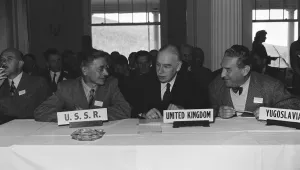International Security is America's leading peer-reviewed journal of security affairs.
Abstract
The Afghan model of warfare uses indigenous allies to replace American conventional ground troops by exploiting U.S. airpower and small numbers of American special operations forces. Some argue that this model is widely applicable, enabling a major restructuring of the U.S. military and considerable freedom for American military intervention. An assessment of such claims in light of recent combat experience in Afghanistan and Iraq, however, finds the model’s applicability to be more limited. Where U.S. allies have had skills and motivation comparable to their enemies’, the Afghan model has proven extremely lethal even without U.S. conventional ground forces. But where U.S. allies have lacked these skills, they have proven unable to exploit the potential of American airpower. The model can thus be a powerful tool, but one with important preconditions for its use—and these preconditions limit its potential to transform U.S. force structure or defense policy.
Biddle, Stephen. “Allies, Airpower, and Modern Warfare: The Afghan Model in Afghanistan and Iraq.” Winter 2005/06
The full text of this publication is available in the link below.





